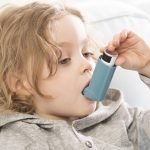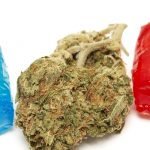Many people like to head out on a weekend evening to blow off some steam after the work week and have a few drinks. Chances are, though, that when you do head for a bar, you are not knocking back 10 drinks or more in a sitting to clear your stress and anxiety. Unfortunately, you may not be able to say the same for your teenager. According to new research, approximately 10 percent of high school seniors report doing just this type of alcohol binging.
The study of teenage health, which was conducted at the University of Michigan’s Institute for Social Research in Ann Arbor, found that the incidence of heavy binge drinking among teens has remained fairly constant at around 9.6 percent of high school seniors over the past several years.1 Tanner, Lindsey. “One in 10 High School Seniors Reports ‘Extreme Binge Drinking’.” ABC News. 16 September 2013. Accessed 26 September 2013. http://abcnews.go.com/Health/wireStory/extreme-binge-drinking-uncommon-high-school-20272768 The figures that the researchers compiled for the drinking habits of the students is the result of surveys answered by more than 16,000 high school seniors every year on behalf of the National Institute on Drug Abuse. It has always included information on alcohol consumption, but questions directly addressing levels of binge drinking have been integrated since 2005.
Binge drinking was defined as having a minimum of five alcoholic drinks in a row, but that is scarily just the baseline amount that one out of every 10 seniors admitted to doing within the previous two weeks. The number of those who reported having 10 or more drinks in a row was just about as large, at 9.6 percent of the participants. And an only slightly smaller portion of the subjects–close to six percent–said they had consumed an incredible 15 drinks or more in a row recently.
As the scientists analyzed the data further, they determined that males were more likely than females to engage in binge drinking, which is hardly shocking news. But they also discovered that white kids are more likely to binge than kids who identify themselves as other races, and those seniors whose parents are the most educated actually have increased binging rates compared to those with less educated parents. However, the students with highly educated parents tended not to participate in the most extreme binges of 15 drinks or more as often as their peers. The highest rates of binge drinking came mostly from those living in rural settings as well as across the Midwest. The western states had the lowest levels of binge drinking. (And I bet you were expecting California to top the list!)
The good news is that compared to 30 years ago when some states still had a legal drinking age of 18, binge drinking among high school seniors has declined significantly. Back in 1983, 41 percent of high school seniors reported drinking at least five drinks in a sitting.2 “Defending the Minimum Legal Drinking Age Law.” Healthy Communities Healthy Youth. Accessed 27 September 2013. http://www.gvhp.org/Portals/0/docs/HCTC%20Defending%20the%20Minimum%20Legal%20Drinking%20Age%20Law.pdf The bottom line is that although we’ve definitely made progress over the last 30 years, the numbers in recent years appear to have stagnated to some extent. This may be due to the simple fact that kids will be kids, and the teenage years are ripe for experimentation, rebellion, and yearning for freedom, all of which may lead them to try–and push the limits of–substances like alcohol.
But even if drinking is a normal part of development for many teenagers, taking it to the extreme by binging can be potentially very dangerous. Teens may not be aware of the symptoms of alcohol poisoning, which can affect basic bodily functions including heart rate and breathing, occasionally to the point of being deadly. Then there are the risks of injury, seriously impaired decision making, physical or sexual assault, and the impeded development of still maturing brains.3 “Underage Drinking.” National Institute on Alcohol Abuse and Alcoholism. Accessed 27 September 2013. http://www.niaaa.nih.gov/alcohol-health/special-populations-co-occurring-disorders/underage-drinking On top of all that, a 2010 study at Loyola University in Chicago, Illinois found that binge drinking increases a teen’s vulnerability to developing a mood disorder such as depression or anxiety later in life.4 “Binge-drinking teens may be risking future depression.” Eureka Alert. 15 November 2010. Accessed 27 September 2013. http://www.eurekalert.org/pub_releases/2010-11/luhs-btm110210.php
And don’t think that binge drinking is just some rite of passage for the very young. Apparently, although the numbers are a little lower, as many as one in six adults over the age of 35 admits to binge drinking about four times each month, according to a 2012 survey conducted by the Centers for Disease Control and Prevention in Atlanta.5 “Binge Drinking.” Centers for Disease Control and Prevention. 7 November 2012. Accessed 27 September 2013. http://www.cdc.gov/alcohol/fact-sheets/binge-drinking.htm So if you know that your teenager–or anyone else you are close with, for that matter–has a drinking problem that involves nights of binging, do whatever you can to convince them to cut back on their consumption or even enter a program that can help them cut back or quit. The short-term and long-term health risks are not at all worth the few hours of “fun.”
References
| ↑1 | Tanner, Lindsey. “One in 10 High School Seniors Reports ‘Extreme Binge Drinking’.” ABC News. 16 September 2013. Accessed 26 September 2013. http://abcnews.go.com/Health/wireStory/extreme-binge-drinking-uncommon-high-school-20272768 |
|---|---|
| ↑2 | “Defending the Minimum Legal Drinking Age Law.” Healthy Communities Healthy Youth. Accessed 27 September 2013. http://www.gvhp.org/Portals/0/docs/HCTC%20Defending%20the%20Minimum%20Legal%20Drinking%20Age%20Law.pdf |
| ↑3 | “Underage Drinking.” National Institute on Alcohol Abuse and Alcoholism. Accessed 27 September 2013. http://www.niaaa.nih.gov/alcohol-health/special-populations-co-occurring-disorders/underage-drinking |
| ↑4 | “Binge-drinking teens may be risking future depression.” Eureka Alert. 15 November 2010. Accessed 27 September 2013. http://www.eurekalert.org/pub_releases/2010-11/luhs-btm110210.php |
| ↑5 | “Binge Drinking.” Centers for Disease Control and Prevention. 7 November 2012. Accessed 27 September 2013. http://www.cdc.gov/alcohol/fact-sheets/binge-drinking.htm |











